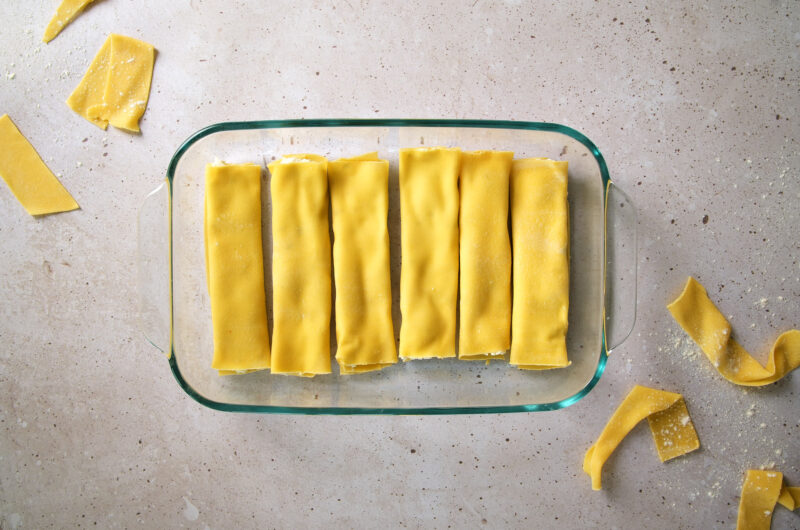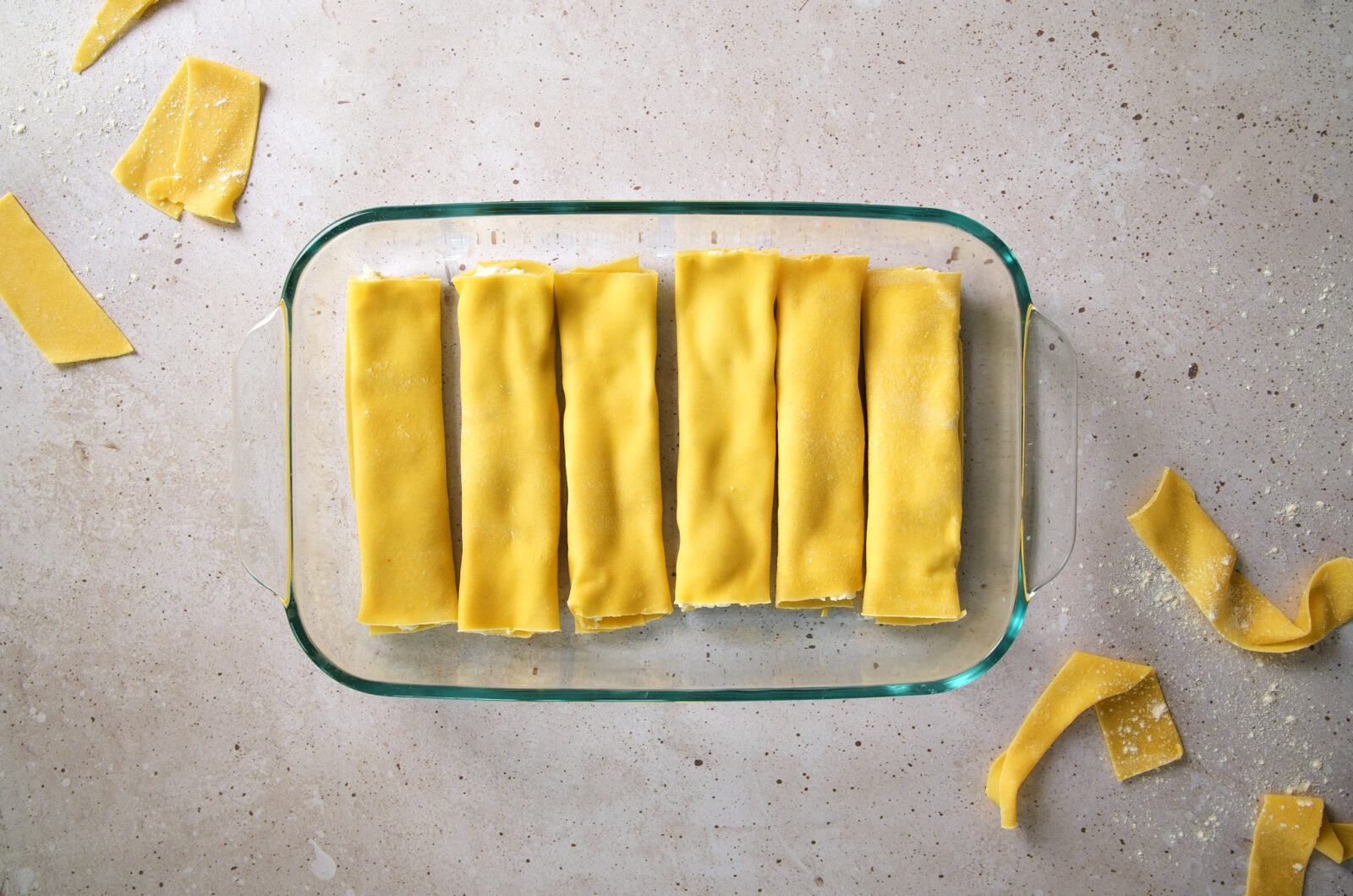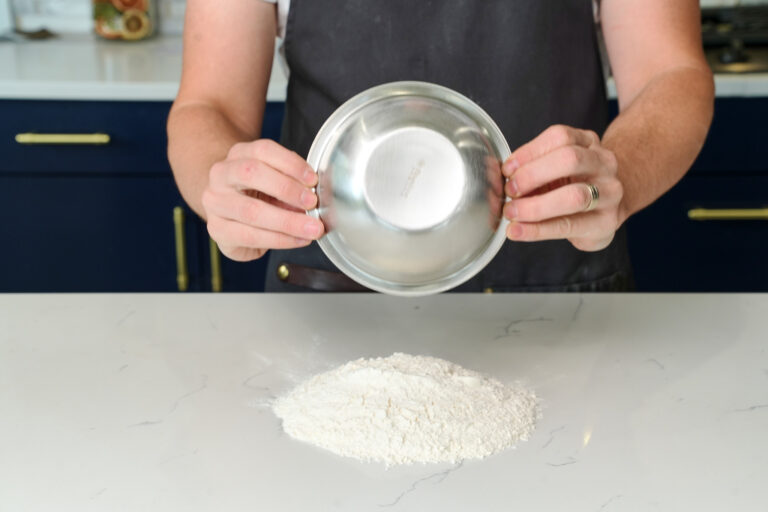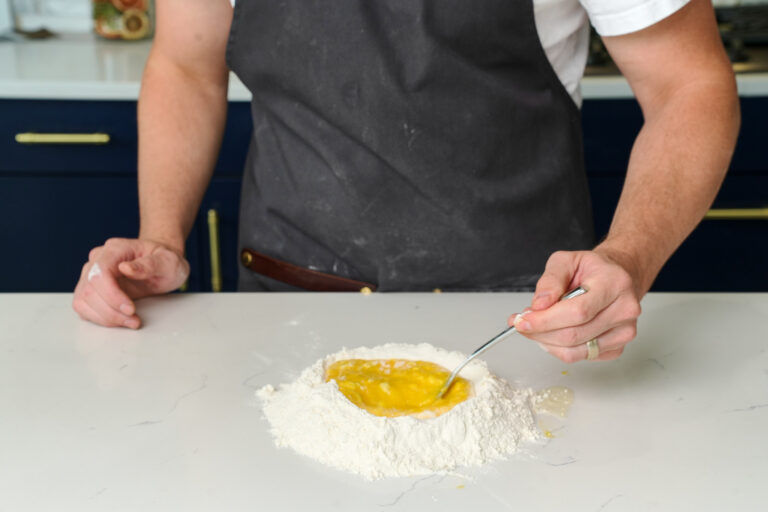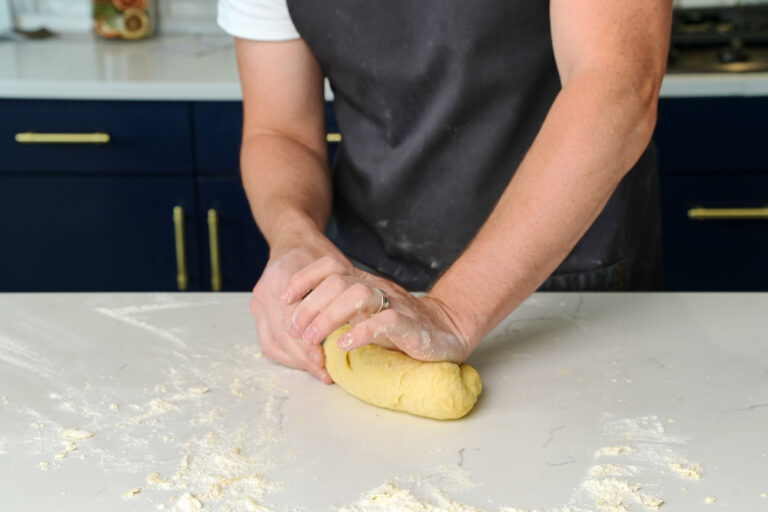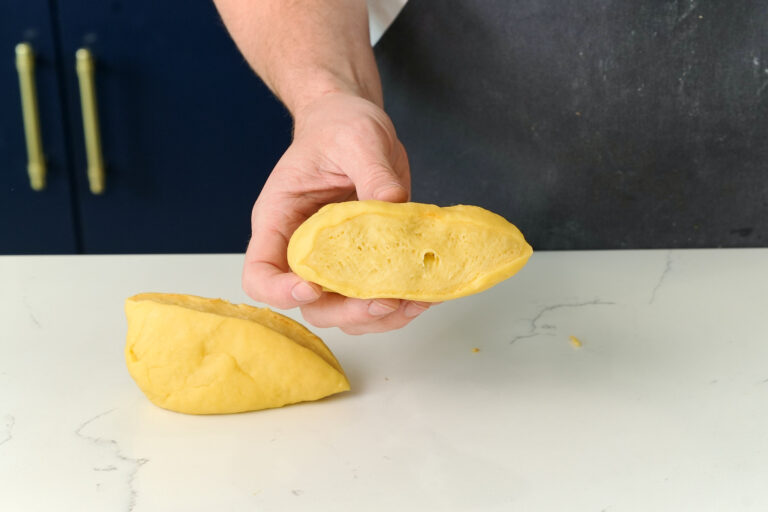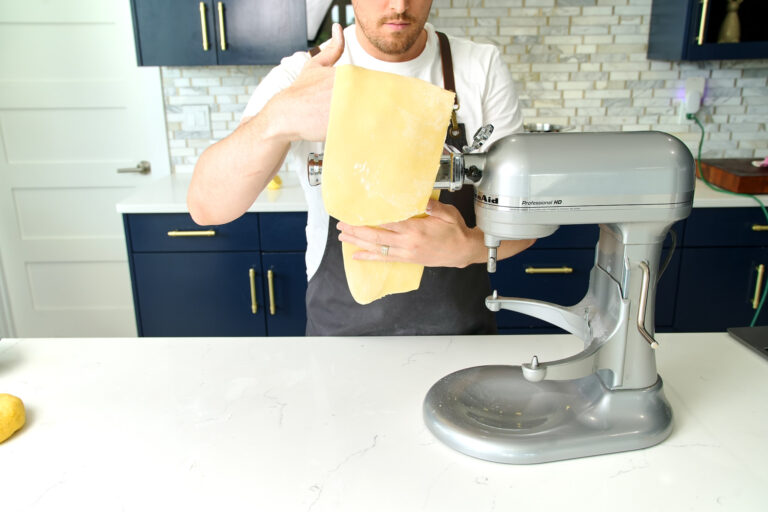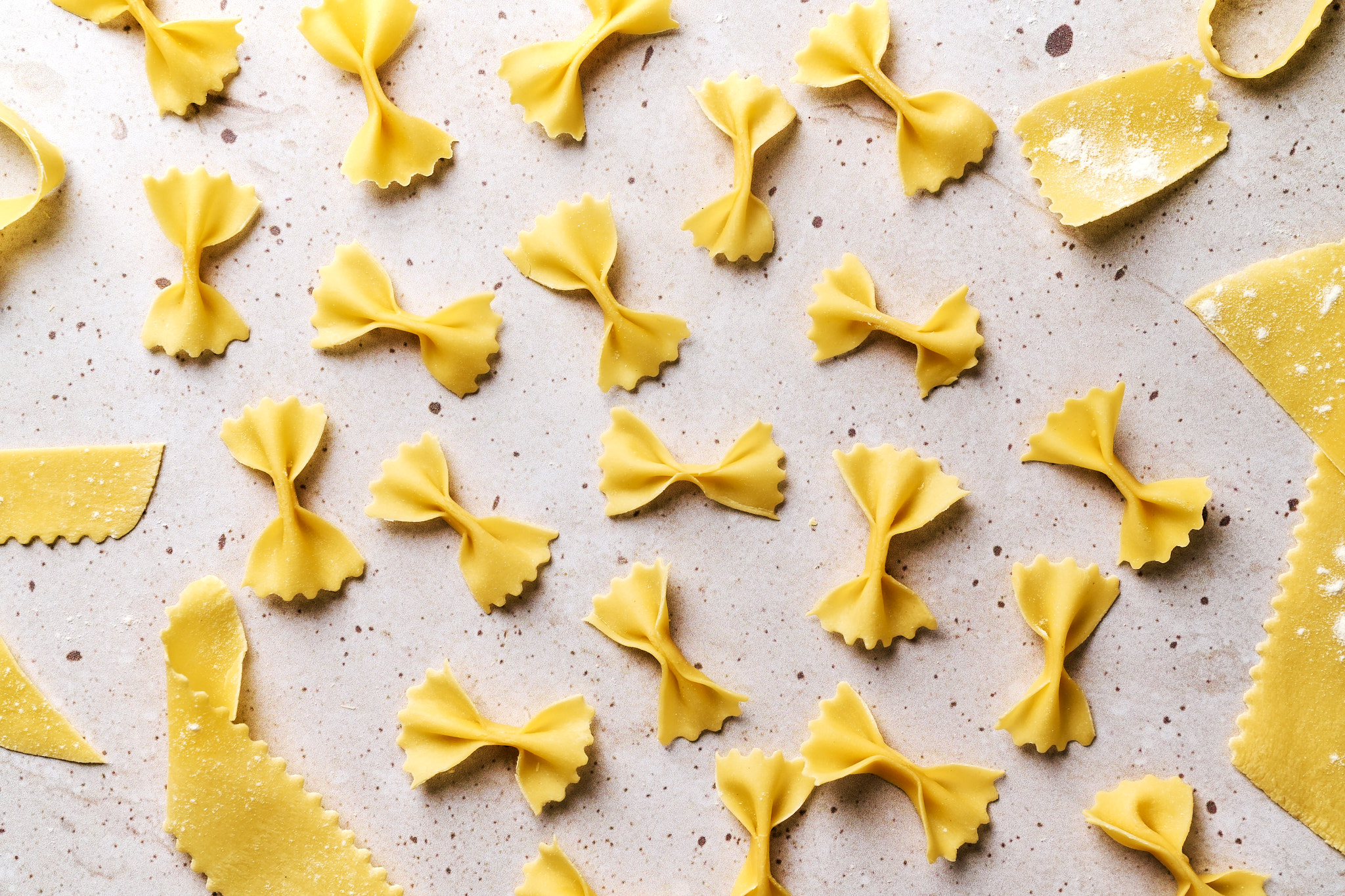Disclaimer: Some links are Amazon affiliate links. Purchases made through them help support the recipe testing, photos, and content I share — thank you!
Summary
Versatile, fresh pasta sheets—your Nona would be proud of
This handmade pasta dough is our go-to for lasagna, manicotti, cannelloni, ravioli, or any dish that calls for a balance between delicate and firm pasta sheets. So what’s the secret to a superior pasta texture? Using the right flour and technique. We use a mixture of “00” pasta flour and fine semolina, it rolls smoothly and holds up to boiling, stuffing, or baking. We think once you try it, you won’t want to have it any other way.
You May Like These Recipes Too
Additional Details About This Recipe
Why not use all-purpose flour for pasta making?
You can, but the dough will lack the silky stretch of 00 and the toothsome bite of semolina. For best texture and ease of handling, stick to specialty flours.
Can I use this dough for ravioli?
Yes, just roll to setting 6 or 7 depending on how delicate you want the filling-to-dough ratio. For stuffed pastas, slightly thinner may be better.
What if the dough is cracking or too dry?
Add a few drops of water and knead it in. Conversely, if it’s too sticky, dust with more semolina. You’re aiming for a firm, cohesive dough that holds its shape when pinched.
How much does this recipe yield?
Roughly 350–375 g of fresh dough, which is enough for baked manicotti, lasagna, etc.
Do I need a pasta machine?
Highly recommended, but not required. A rolling pin works—just be ready for a bit more arm work. To get even sheets you will want to use a big flat rolling pin. In Italy, the Nonas use a Mattarello on a wood surface. If you ask an Italian, they will tell you this way of making pasta is the best, but not a common setup in the US.
Nutritional Facts
Per 100 g of fresh pasta (about ¼ batch)
- Calories: 305
- Protein: 11 g
- Carbohydrates: 50 g
- Fat: 4.5 g
- Saturated Fat: 1.3 g
- Cholesterol: 140 mg
- Sodium: 45 mg
- Fiber: 2 g
- Calcium: 28 mg
